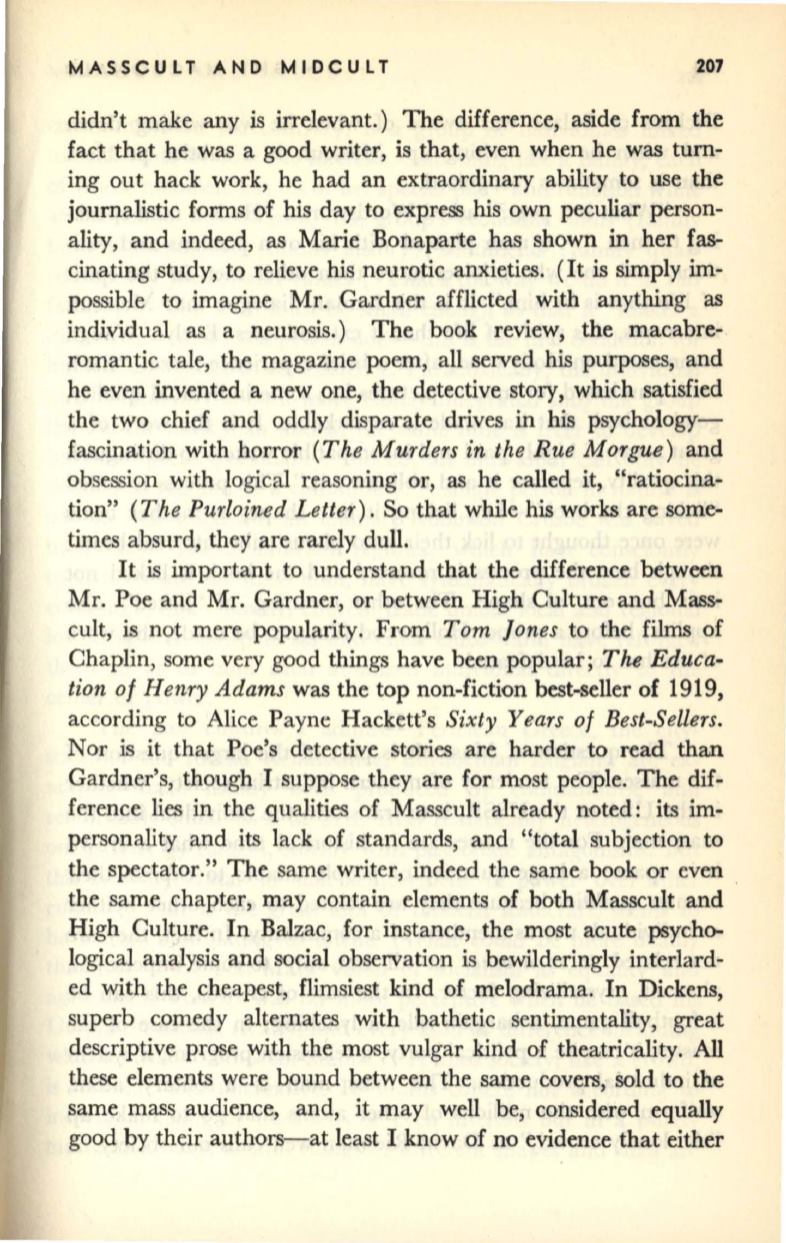
MASSCULT AND MIDCULT
207
didn't make any
is
irrelevant.) The difference, aside from the
fact that he was a good writer, is that, even when he was turn–
ing out hack work, he had an extraordinary ability to use the
journalistic forms of his day to express his own peculiar person–
ality, and indeed, as Marie Bonaparte has shown in her fas–
cinating study, to relieve his neurotic anxieties. (It
is
simply im–
possible to imagine Mr. Gardner afflicted with anything as
individual as a neurosis.) The book review, the macabre–
romantic tale, the magazine poem, all served his purposes, and
he even invented a new one, the detective story, which satisfied
the two chief and oddly disparate drives in his psychology–
fascination with horror
(The Murders in the Rue Morgue)
and
obsession with logical reasoning or, as he called it, "ratiocina–
tion"
(The Purloined Letter).
So that while
his
works are some–
times absurd, they are rarely dull.
It is important to understand that the difference between
Mr. Poe and Mr. Gardner, or between High Culture and Mass–
cult, is not mere popularity. From
Tom Jones
to the films of
Chaplin, some very good things have been popular;
The Educa–
tion of Henry Adams
was the top non-fiction best-seller of 1919,
according to Alice Payne Hackett's
Sixty Years of Best-Sellers.
Nor
is
it that Poe's detective stories are harder to read than
Gardner's, though I suppose they are for most people. The dif–
ference lies in the qualities of Masscult already noted: its im–
personality and its lack of standards, and "total subjection to
the spectator." The same writer, indeed the same book or even
the same chapter, may contain elements of both Masscult and
High Culture. In Balzac, for instance, the most acute
psych~
logical analysis and social observation
is
bewilderingly interlard–
ed with the cheapest, flimsiest kind of melodrama. In Dickens,
superb comedy alternates with bathetic sentimentality, great
descriptive prose with the most vulgar kind of theatricality. All
these elements were bound between the same covers, sold to the
same mass audience, and,
it
may well be, considered equally
good by their authors-at least I know of no evidence that either


